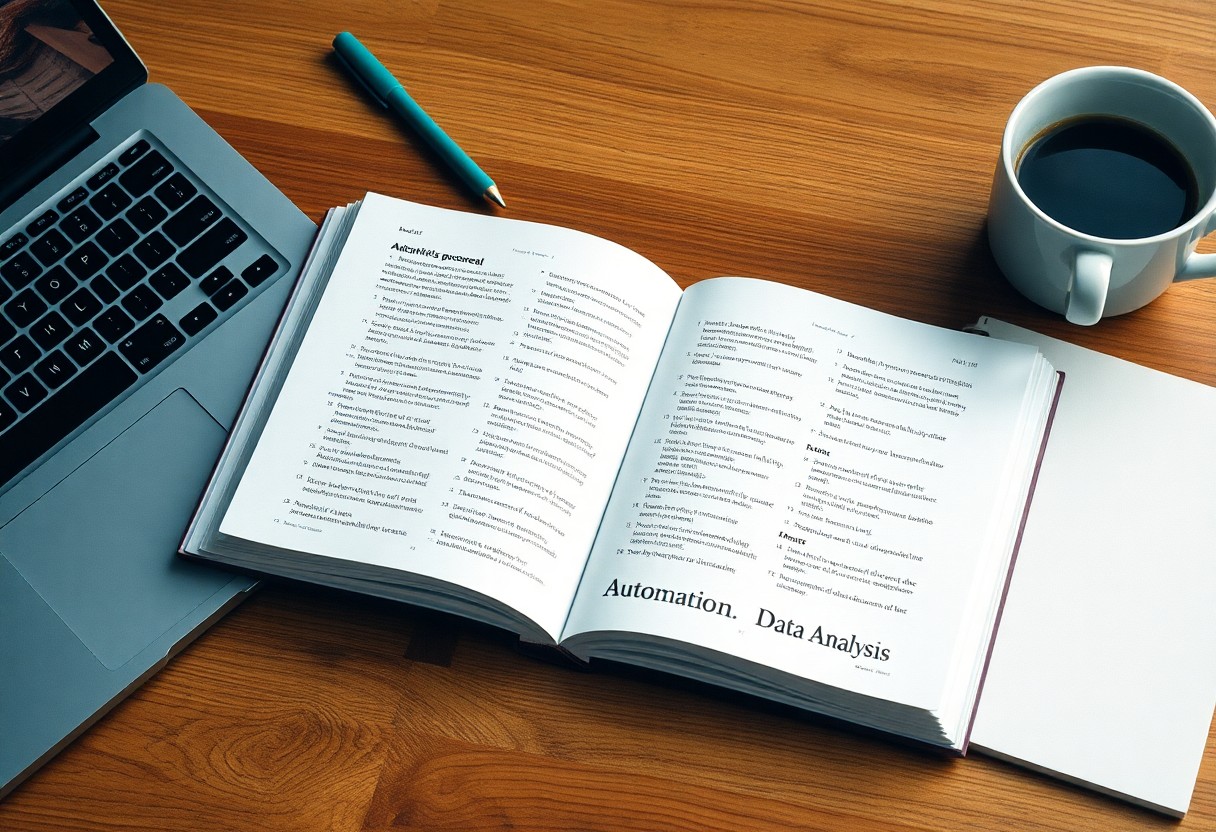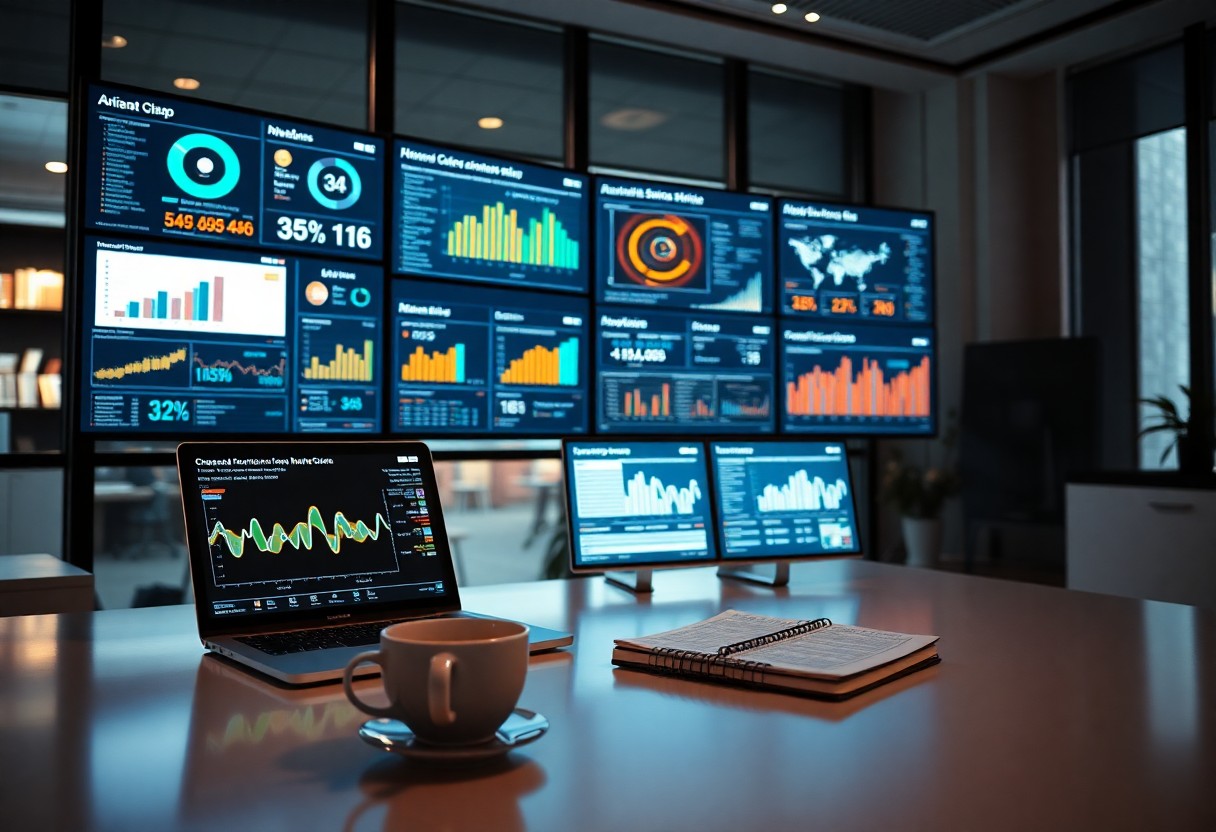
Your Guide to Building an Automated, Full-Stack Marketing Funnel.
Guide yourself through the important steps of creating an effective automated, full-stack marketing funnel that maximizes your business potential. You will learn how to seamlessly integrate various marketing strategies, automate processes, and convert leads into loyal customers. This comprehensive guide equips you with the knowledge and tools to design a funnel tailored to your unique needs, driving engagement and increasing sales. Get ready to streamline your marketing efforts and achieve lasting results.
Laying the Groundwork for a High-Impact Funnel
Creating a high-impact marketing funnel involves careful preparation and strategic planning. Start by assessing your current marketing efforts, identifying gaps, and optimizing existing processes. Understanding the customer journey helps in streamlining touchpoints and ensuring that each stage delivers value, guiding prospects seamlessly toward conversion. By laying a solid foundation, you position your funnel for maximum effectiveness and long-term success.
Defining Your Target Audience with Precision
Pinpointing your target audience requires in-depth analysis of demographics, interests, and pain points. Utilize tools like surveys and analytics to gather data on who your customers are and what motivates their decisions. Create detailed buyer personas that encapsulate these insights, allowing you to tailor your messaging and strategies for maximum resonance and impact.
Crafting a Compelling Value Proposition
A compelling value proposition clearly articulates the unique benefits your product or service offers, distinguishing it from competitors. Highlight specific features that address your audience’s pain points, coupled with measurable outcomes to enhance credibility. Aim for clarity and brevity, ensuring that your message resonates instantly with potential customers, inviting them to engage further.
Your value proposition should not only be unique but also speak directly to your audience’s needs and challenges. Develop it by conducting thorough market research to understand what similar offerings lack. Test various formats, including direct claims or emotional appeals, through A/B testing to see what resonates best. For instance, a SaaS company might emphasize time-saving features that reduce overhead costs, appealing directly to budget-conscious businesses. Clearly communicating these elements in your marketing materials can significantly influence potential customers’ perceptions and decision-making processes.
Blueprinting Your Funnel: The Stages of Engagement
Understanding the stages of engagement in your marketing funnel is vital for turning potential customers into loyal clients. Each stage requires tailored strategies to effectively guide prospects through their journey. From initial attraction to nurturing trust and ultimately closing sales, knowing how to execute at each phase will significantly enhance your overall results.
Top-of-Funnel: Attracting the Right Leads
Your top-of-funnel activities focus on drawing in the right audience through compelling content, targeted ads, and SEO strategies. It’s about creating awareness and interest, leading prospects to engage with your brand. Implementing techniques like social media campaigns, blogs, and lead magnets can help capture the attention of your ideal customers.
Middle-of-Funnel: Nurturing Relationships
During the middle-of-funnel phase, your goal shifts to building trust and nurturing relationships with potential clients. This involves personalized content, email campaigns, and educational resources that align with their needs. Providing valuable insights can enhance your credibility and keep your brand top of mind as prospects evaluate their options.
Nurturing relationships at this stage requires a blend of informational and engaging touchpoints. Utilize segmented email lists to send tailored content, such as case studies or testimonials, that resonate with different audience segments. Webinars and live Q&A sessions further facilitate interaction, allowing you to address concerns directly and build rapport. Tracking engagement metrics will help refine your approach, ensuring you provide the right resources to keep potential customers invested in your solutions.
Bottom-of-Funnel: Closing Sales with Strategy
Closing sales involves presenting compelling offers and addressing any final objections. You will want to leverage case studies, testimonials, and special promotions that reinforce your value proposition. Implementing a streamlined checkout process minimizes friction and increases conversion rates.
At the bottom of the funnel, it’s vital to personalize your strategy based on previous interactions. Using CRM data, you can create targeted offers that fulfill prospective clients’ specific needs or pain points. Consider incorporating easy-to-use payment options and limited-time promotions to create urgency. Follow-up emails post-conversion can further reinforce customer satisfaction and encourage repeat purchases, solidifying long-term relationships as you guide clients through each stage of the funnel.
Automating Your Funnel: Tools and Technologies
Automation streamlines your marketing funnel, allowing for efficient management of leads and customer interactions. By utilizing a blend of software tools and technologies, you can create a seamless experience for your audience without the need for constant manual input. From email marketing platforms to CRM systems, these tools help you engage potential customers through personalized interactions, ultimately driving conversions more effectively. The right automation strategy not only saves time but also enhances the overall performance of your funnel.
Essential Software for Seamless Integration
To ensure a smooth automation process, select software that integrates well with your existing tools. Platforms like HubSpot, ActiveCampaign, and Salesforce provide comprehensive solutions for managing email campaigns, customer relationships, and analytics. Investing in software that connects easily minimizes data silos and fosters better communication across your marketing stack. Optimize your funnel by using tools that offer robust APIs and integration capabilities, enabling you to automate various tasks while maintaining data accuracy and continuity.
Leveraging AI and Machine Learning for Personalization
Incorporating AI and machine learning into your marketing funnel enables you to deliver tailored experiences. By analyzing user behavior and preferences, these technologies allow you to segment your audience more effectively and personalize your messaging. This approach significantly increases conversion rates, as prospects receive content that resonates with their specific needs. Tools like Segment and Drift leverage AI to optimize customer interactions, ensuring that every touchpoint is engaging and relevant.
AI-driven personalization elevates your funnel’s effectiveness through predictive analytics and behavior analysis. For example, platforms like Salesforce Einstein use machine learning to predict customer needs, enabling you to adjust your marketing strategy in real-time. By implementing personalized recommendations based on previous interactions, you can enhance user engagement and drive higher conversion rates. Case studies show companies utilizing AI have seen up to a 20% increase in sales, underscoring the transformative impact of leveraging technology in your marketing strategies.
Metrics that Matter: Measuring Funnel Success
Assessing the effectiveness of your marketing funnel hinges on the right metrics. These metrics provide insights into user behavior and help you determine how well each stage of your funnel performs. With a solid understanding of these data points, you can fine-tune your strategies and maximize conversion rates for continuous growth.
Key Performance Indicators to Track
Focusing on specific Key Performance Indicators (KPIs) allows you to pinpoint areas needing improvement. Metrics such as conversion rates, cost per acquisition, and customer lifetime value are imperative. Tracking these KPIs gives you clear benchmarks for analyzing your funnel’s performance and guiding your marketing efforts effectively.
Utilizing Analytics for Continuous Improvement
Leveraging analytics tools can significantly enhance your marketing funnel’s performance. By analyzing user interactions and drop-off points, you gain insights into which elements engage your audience and which do not. Regularly adjusting your strategies based on this data fosters better alignment with your target market’s needs and preferences.
Diving deeper into analytics involves A/B testing various funnel components, such as headlines or call-to-action buttons, to see what resonates best with your audience. Utilizing platforms like Google Analytics or specialized funnel analytics software enables precise tracking of user behavior. For instance, observing a 20% higher engagement rate on a revised landing page can affirm its effectiveness. This data-driven approach allows for responsive adjustments that optimize your funnel, ultimately driving growth and conversions over time.

Revolutionizing Your Approach: Trends Shaping the Future of Marketing Funnels
Emerging trends are redefining how you approach marketing funnels, making them more sophisticated and customer-centric. The integration of advanced technologies like AI and machine learning allows for personalized user experiences, while data-driven insights enhance your targeting strategies. Understanding these trends positions you to adapt and thrive in an ever-evolving landscape, ensuring your marketing efforts remain relevant and impactful.
The Rise of Omnichannel Marketing
Omnichannel marketing is becoming vital as consumers expect seamless experiences across platforms. You should incorporate various channels—website, social media, email—ensuring your messaging is unified. This cohesive approach enhances brand recognition and facilitates more effective customer journeys, contributing to higher conversion rates.
Adapting to Behavioral Economics in Consumer Choices
Understanding behavioral economics empowers you to anticipate consumer choices better. By recognizing cognitive biases and decision-making patterns, such as the scarcity principle or anchoring effects, you can tailor your marketing strategies. This insight helps you craft compelling offers and narratives that resonate deeply, driving engagement and sales.
For instance, leveraging the scarcity principle means creating urgency in your marketing messages, encouraging immediate action. If you highlight limited-time offers or exclusive products, consumers may feel compelled to make quicker decisions. Additionally, employing social proof—like testimonials or case studies—can nudge potential buyers towards your offerings by demonstrating their value through the experiences of others. Incorporating these behavioral economics elements allows you to refine your funnel, increasing effectiveness and minimizing drop-off rates.
To wrap up
Ultimately, building an automated, full-stack marketing funnel empowers you to streamline your marketing efforts, optimize conversion rates, and enhance customer engagement. By integrating various tools and strategies, you can create a cohesive system that nurtures leads and drives sales efficiently. Implementing these principles allows you to focus on scaling your business while maintaining a strong connection with your audience. With the right approach and continuous refinement, you can achieve sustainable growth and success in your marketing endeavors.


